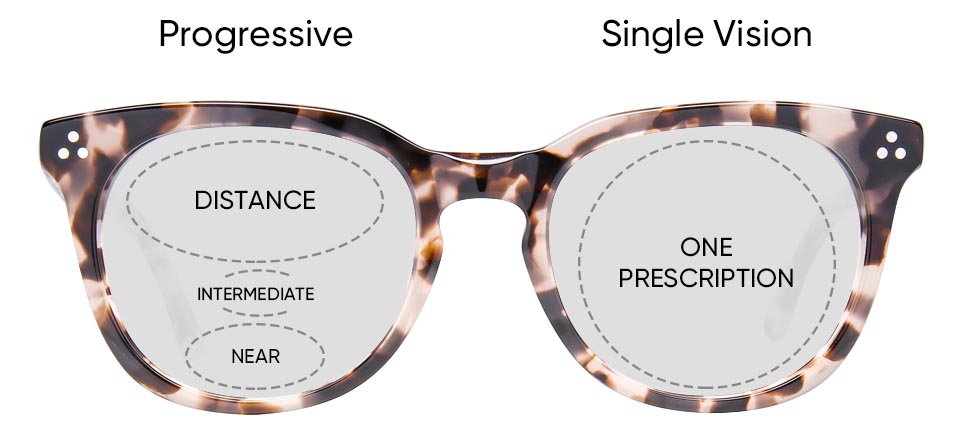outline:
I.Single Vision Lenses
A. Suitable for individuals with the same prescription for distance and near vision
B. Ideal for specific visual needs at only one distance
C. Generally do not require an adjustment period
II. Progressive Lenses
A. Address presbyopia and provide a seamless transition between different visual distances
B. Convenience of clear vision at all distances without switching between multiple pairs of glasses
C. May require an adjustment period due to their multifocal design
III. Considerations
A. Lifestyle and activities
B. Adaptation period
C. Cost
IV. Conclusion
A. The choice depends on individual visual requirements, lifestyle, comfort, and budget constraints
B. Consulting with an eye care professional can provide personalized guidance based on specific needs.
When comparing single vision and progressive lenses, it's important to carefully consider the features and requirements of each to make an informed decision. The following is a detailed analysis of the comparison points between single vision lenses and progressive lenses:

A: Single vision lenses are designed for individuals with the same prescription for distance and near vision. They provide clear vision at specific distances and are suitable for those with consistent visual needs.
B.These lenses are ideal for meeting specific vision needs only within a certain distance. For example, individuals who primarily need glasses for distance or near vision may benefit from single vision lenses.
C.C. Single vision lenses generally do not require an adjustment period because they focus on providing clear vision at a fixed distance without the need for transitions.
A: Progressive lenses are designed to address presbyopia and provide a seamless transition between different viewing distances. They enable clear vision for distance, intermediate and near vision without the inconvenience of switching between multiple pairs of glasses.
B.For people with active lifestyles or those who perform a variety of visual tasks, getting clear vision at all distances without the need for multiple pairs of glasses can be a significant advantage.
C.However, it is worth noting that progressive lenses may require an adjustment period due to their multifocal design. Some people may have difficulty adapting to seamless transitions between different visual distances.
3.Precautions
A: When choosing between single vision and progressive lenses, it is important to consider lifestyle and activities. People who engage in a variety of activities may find the convenience of progressive lenses beneficial, while those who have specific vision needs only at a certain distance may gravitate toward single vision lenses.
B.The adaptation period is an important factor to consider, especially for individuals who are sensitive to changes in visual perception. Progressive lenses may require an adjustment period, whereas single vision lenses generally do not present this challenge.
C.Cost is also an important consideration, as progressive lenses are generally more expensive than single vision lenses due to their advanced multifocal design and technology.
4.in conclusion
A: Choosing single vision or progressive lenses depends on individual visual requirements, lifestyle, comfort and budget constraints. It is important to carefully weigh these factors to make an informed decision.
B.Seeking personalized guidance from an eye care professional can provide valuable insights and recommendations based on individual needs, ensuring that the lenses selected meet the individual's specific requirements and preferences.
In summary, choosing between single vision or progressive lenses depends on a thorough consideration of personal needs, lifestyle, comfort, and budget constraints. By carefully evaluating these factors and consulting with an eye care professional, individuals can make an informed choice that best suits their specific vision and lifestyle requirements.
Post time: Feb-03-2024
